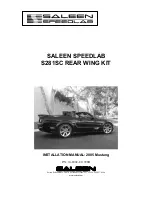
201
Driving and operation
Coupling socket load
The coupling socket load is the load
exerted by the caravan/trailer on the
coupling ball. It can be varied by changing
the weight distribution when loading the
caravan/trailer.
The maximum permitted coupling socket
load (vehicles with engine Z 12 XEP
1)
:
45 kg, other versions: 55 kg) of the towing
vehicle is noted on the identification plate
of the trailer towing device and specified in
the vehicle documents. This must always
be complied with, particularly when towing
heavy trailers. The coupling socket load
must never be less than 25 kg.
When measuring the coupling socket load,
make sure that the drawbar of the loaded
caravan/trailer is at the same height as it
will be when the caravan/trailer is coupled
with the towing vehicle loaded. Particularly
important for caravans/trailers with
tandem axle.
Rear axle load during towing
With the trailer attached and the towing
vehicle fully loaded, including all the
passengers, the permitted rear axle load
(specified on identification plate and
vehicle documents) for Hatchbacks may be
exceeded by 45 kg and the permitted total
load may be exceeded by 50 kg.
For Corsavans, the permitted rear axle
load may be exceeded by 25 kg. The
permitted total load may be exceeded by
the following amounts with the engines
2)
specified below:
Trailer towing is not permitted for
Corsavans with tyre size 215/45 R 17.
If the permitted rear axle load is exceeded
a maximum speed of 60 mph (100 km/h)
applies. If lower national maximum speeds
are specified for trailer towing, they must
be complied with.
Tyre pressure
Increase the tyre pressure on the towing
vehicle to the value specified for a full
load – see page 280. Check the pressure of
the spare wheel and caravan/trailer
wheels.
1)
Sales designation – see page 268.
2)
Sales designation – see pages 268, 269.
Z 10 XEP
30 kg
Z 12 XEP
15 kg
Z 13 DTH
40 kg
Z 13 DTJ
35 kg
Ofrecido por www.electromanuales.com
















































